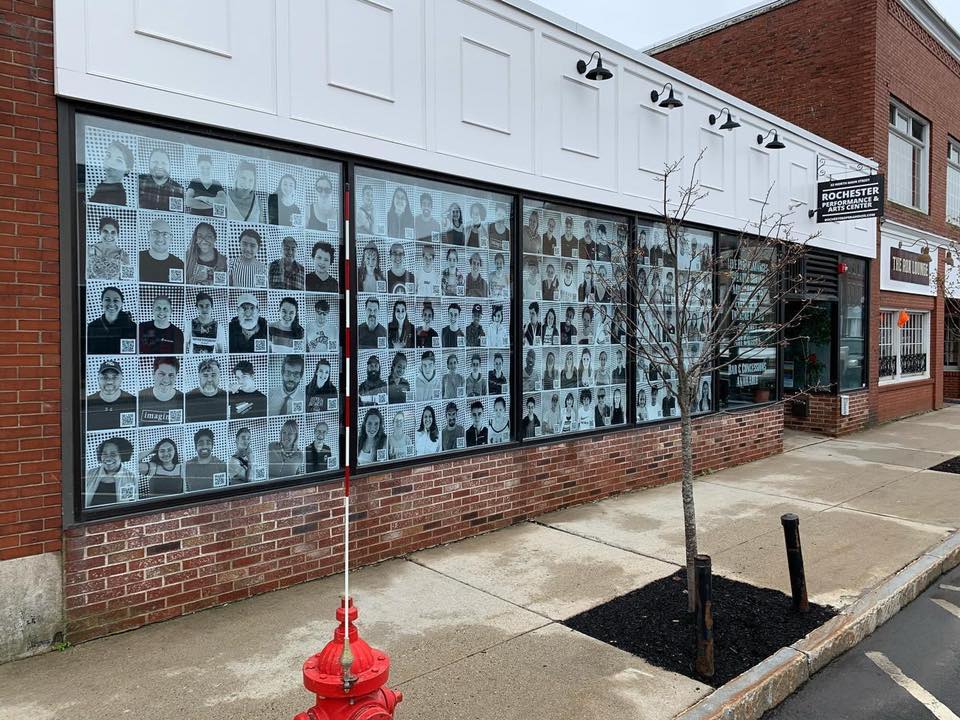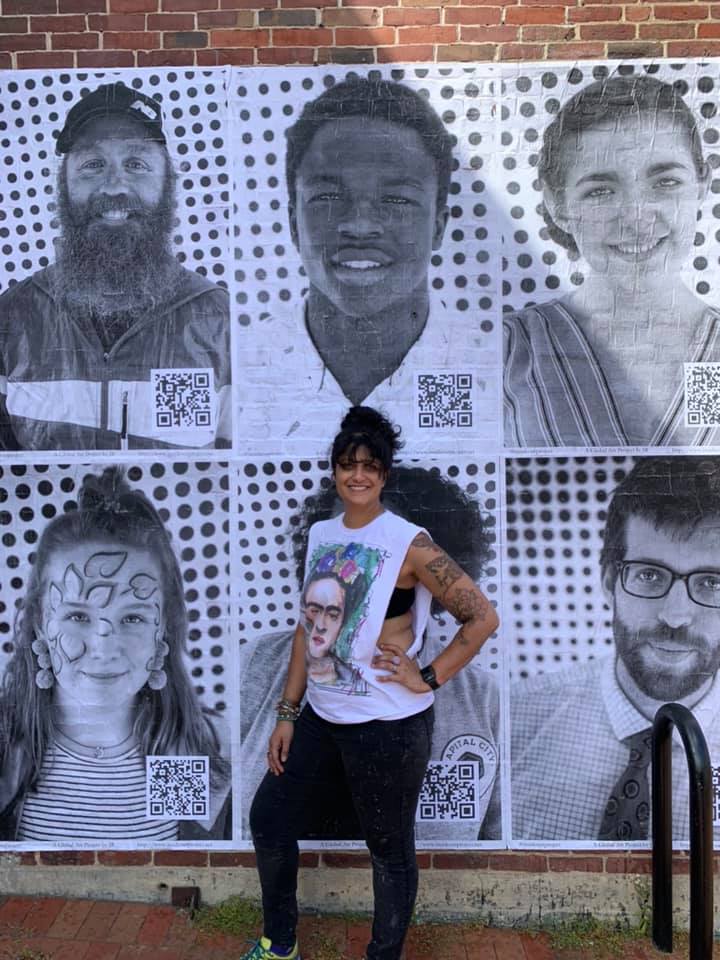New Hampshire Global Learning Fellow finding strength in diversity and art
By G. Strout, NEA-NH Communications
At a time when discussions on race, diversity and inclusion in New Hampshire’s classrooms are being silenced, we can find some hope and good news.
Somayeh Kashi, a Middle School Art Educator at Rundlett Middle School in Concord, has been named a 2023 Global Learning Fellow from the state of New Hampshire.
They could not have chosen a more enthusiastic and worthy applicant than Somayeh.
Somayeh Kashi is an art educator at Rundlett Middle school, a professional artist, and first generation American. Her family is from Iran.
Like many educators, at the end of the school year in June, Somayeh felt burnt-out, defeated and was re-thinking her choice to be an educator. A friend of hers mentioned the Fellowship opportunity and that she might benefit from it. This was only four days before the rather arduous application was due.
Somayeh locked herself in her studio and for the next few days worked on the application. With hours to spare before the deadline, she submitted it and two months later found out she had been selected as an NEA Foundation Global Learning Fellow.
“I was like, Wow! The universe must be trying to tell me something. I am so excited to learn, to add to my craft, and to bring it all back to New Hampshire. I wonder how many other opportunities there are out there for educators like this?”
Over the course of a year, NEA Foundation Global Learning Fellows immerse themselves in online coursework, webinars, reading and reflection as well as in a two-day professional workshop and an international field study. The field study brings the cohort together to investigate the historical and cultural context of the country they visit and learn about its education system through meetings with policymakers, business and nonprofit leaders as well as visits to schools to meet teachers, students and administrators. The field study country for the 2023 cohort is South Africa.
“I like perfecting my craft, reading, re-examining my curriculum. I also love to travel, but all my previous trips have been as a visitor. Now, I get to meet teachers, students, and principals from other parts of the world and share what I have learned.”
Somayeh talked of a horrible experience of racism that has transformed how she approaches her work as an educator. It sharpened her focus on equity and diversity and she wondered as a 42 year old experiencing micro-aggressions, how are the 12-13 year old’s she teaches coping.
“It changed how I viewed everything,” she said. “It shifted my circle of friends – all aspects of my life, really.”
From this, in 2019, Diversity in the 603 was born. A project that her website describes like this:
Concord is the capital of New Hampshire and has a rich cultural history. From the Pennacook Tribe of the Abenaki to the British who were first to settle here; quarry workers and their families who immigrated from Quebec, French Canadians who were drawn to Concord for the chance to cut rock for our rail station, and the Swedes and Italian stonecutters who joined them.
When Concord was designated a refugee resettlement city in 1990’s the first group of newcomers arrived from the former Yugoslavia, followed by refugees from Nepal (of Bhutanese descent), and African refugees primarily from Somalia, Liberia, Burundi and the Democratic Republic of Congo.
Today, New Hampshire is home to many cultures and ethnicities and becoming more diverse everyday. Our goal is to showcase who we are as Concord residents, new residents and those have been here for many generations. Each portrait will be connected to a story of how they came to be in Concord, and why they continue to stay. My goal is to show that we are more alike than we are different.

Her students walked around during Concord’s Market Days festival in June 2019 and took photos of more than 100 people. The portraits were posted in storefronts along Main Street, and are plastered on walls of a few buildings. While taking the photos, the students also recorded interviews with the subjects talking about the place they grew up, their ancestry and their fears, hopes and dreams.
Her students were fascinated by the diversity of backgrounds and origin stories, and enlightened by the similarities in what we all long for and fear.
“It was amazing to watch my students, because every time they came back from having a conversation with someone, they were moved and different,” she said. “They were having very thoughtful conversations that you wouldn’t have expected a 15 or 16-year-old to have.”
“Art has the power to shape and move and transform,” she said. “Where I once felt small and unable to do much, art gives me the opportunity to find my voice and to remake myself unbroken.”
“As a minority, you do things to try to fit in, to survive. But at some point you realize it’s too much, and like taking a blindfold off you see that you’re never really going to fit in, not really. You suddenly understand that if I am experiencing this, what must it be like for others – what must they be experiencing. And you look for some way to be heard.”
“An art project is not a fix, but it makes me feel better, gives me the chance to speak out, uninterrupted, without having the defend the truth of who I am – just to speak.”

